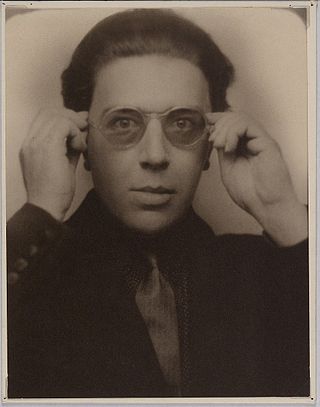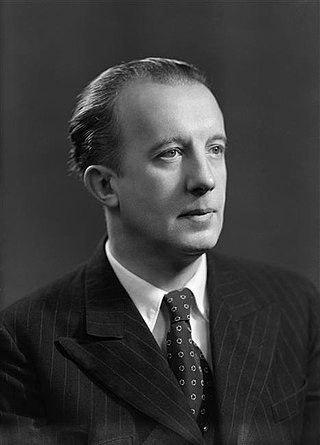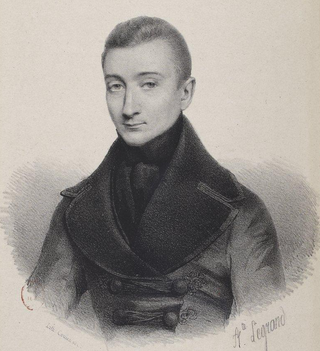
Arabic calligraphy is the artistic practice of handwriting and calligraphy based on the Arabic alphabet. It is known in Arabic as khatt, derived from the word 'line', 'design', or 'construction'. Kufic is the oldest form of the Arabic script.

André Robert Breton was a French writer and poet, the co-founder, leader, and principal theorist of surrealism. His writings include the first Surrealist Manifesto of 1924, in which he defined surrealism as "pure psychic automatism".

Paul Éluard, born Eugène Émile Paul Grindel, was a French poet and one of the founders of the Surrealist movement.

Émile Nelligan was a Canadian Symbolist poet from Montreal who wrote in French. Even though he stopped writing poetry after being institutionalized at the age of 19, Nelligan remains an iconic figure in Quebec culture and was considered by Edmund Wilson to be the greatest Canadian poet in any language.

Islamic calligraphy is the artistic practice of handwriting and calligraphy, in the languages which use Arabic alphabet or the alphabets derived from it. It includes Arabic, Persian, Ottoman, and Urdu calligraphy. It is known in Arabic as khatt Arabi, which translates into Arabic line, design, or construction.

Hassan Massoudy, born in 1944, is an Iraqi painter and calligrapher, considered by the French writer Michel Tournier as the "greatest living calligrapher", who currently lives in Paris. His work has influenced a generation of calligraffiti artists.

Xavier Forneret was a French writer, poet, playwright and journalist.

Asemic writing is a wordless open semantic form of writing. The word asemic means "having no specific semantic content", or "without the smallest unit of meaning". With the non-specificity of asemic writing there comes a vacuum of meaning, which is left for the reader to fill in and interpret. All of this is similar to the way one would deduce meaning from an abstract work of art. Where asemic writing distinguishes itself among traditions of abstract art is in the asemic author's use of gestural constraint, and the retention of physical characteristics of writing such as lines and symbols. Asemic writing is a hybrid art form that fuses text and image into a unity, and then sets it free to arbitrary subjective interpretations. It may be compared to free writing or writing for its own sake, instead of writing to produce verbal context. The open nature of asemic works allows for meaning to occur across linguistic understanding; an asemic text may be "read" in a similar fashion regardless of the reader's natural language. Multiple meanings for the same symbolism are another possibility for an asemic work, that is, asemic writing can be polysemantic or have zero meaning, infinite meanings, or its meaning can evolve over time. Asemic works leave for the reader to decide how to translate and explore an asemic text; in this sense, the reader becomes co-creator of the asemic work.

Tristan Klingsor, birth name Léon Leclère, was a French poet, musician, painter and art critic, best known for his artistic association with the composer Maurice Ravel.
Shingai Tanaka was a Japanese calligrapher who studied under Master Goshin Yasui, becoming one of the country's best shodō artists. He is the author of the book Sho, Le calligraphes de kyoto, ed. Cénton, 2008 (ISBN 2-915384-06-1).
Jacques Izoard was a Belgian poet and essayist. He was born Jacques Delmotte at Liège.
Niels Shoe Meulman is a visual artist, graffiti writer, graphic designer and art director, born, raised and based in Amsterdam, Netherlands. ”Experimenting within the traditional medium of paint-on-canvas, but also unafraid to venture into other domains like conceptual installations and poetry, Niels Shoe Meulman keeps pushing the limits of the global urban contemporary art movement," writes the Museum of Graffiiti, who collected his artwork into their permanent collection, as has the Stedelijk Museum in Amsterdam and The San Francisco Museum of Modern Art, and many private collectors.
Islamic graffiti is a genre of graffiti created by people who usually relate to the Middle East or North Africa, using Arabic or other languages for social or political messages. It is a popular art genre created by "artists, graffiti writers, designers and typographers from the Middle East and around the world who merge Arabic calligraphy with the art of graffiti writing, street art and urban culture."
Contemporary art in Egypt is a term used to refer to visual art, including installations, videos, paintings, or sculptures, developed in the Egyptian art scene. While the contemporary art scene is mainly concentrated in Cairo and Alexandria, it is developing fast with the emergence of spaces for artists, and support from the public or from abroad. Many Egyptian artists use the Egyptian contemporary art scene as a ramp toward the international art scenes.

eL Seed is a French-Tunisian calligraphy artist whose work feature the Arabic language through graffiti.

Yazan Halwani is a Lebanese artist and activist from Beirut. Yazan is best known for his public art displays, including graffiti, murals, and sculptures. His murals can be found on buildings across Beirut, and often depict portraits of important Lebanese and Middle Eastern figures.

Calligraffiti is an art form that combines calligraphy, typography, and graffiti. It can be classified as either abstract expressionism or abstract vandalism. It is defined as a visual art that integrates letters into compositions that attempt to communicate a broader message through writing that has been aesthetically altered to move beyond the literal meaning. Simply put, it is the conscious effort of making a word or group of words into a visual composition. As such it is meant to be both an aesthetic experience and provocative art—mixing tradition and precision with modern unbridled self-expression.
Rabah Belamri was an Algerian writer.
Kamal Kheir Beik (1935–1980) was a Syrian-born poet and dissident. He is known for his Arabic poems written in free verse and for his frequent exiles. He was assassinated in Beirut on 5 November 1980 together with two other members of the Syrian Social Nationalist Party (SSNP). The murder is one of the unsolved cases in Lebanon.

Thibault Jacquot-Paratte is an Acadian writer and musician, born in Kentville, Nova Scotia, of Franco-Swiss parentage. He writes both in French and English.












